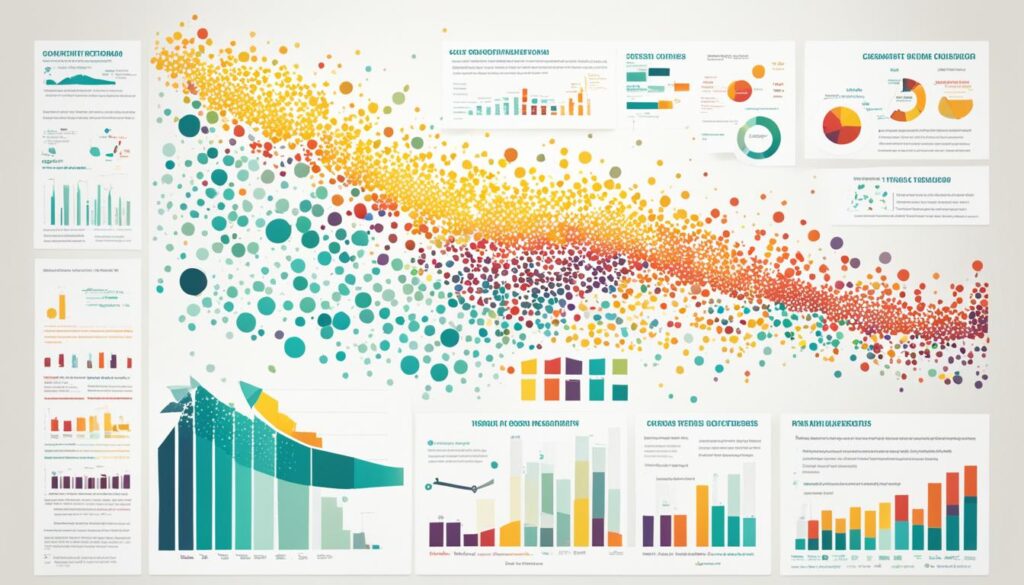Within the context of a newly sovereign Timor-Leste, this nation has surmounted manifold challenges on its educational and social progress journey. Facing the ardous task of reconstructing its educational framework post-colonization and independence strife, it has encountered hurdles such as inadequate teacher training, linguistic hurdles, delayed school enrolment, student attrition, and academic repetition. However, which specific strategies have significantly contributed to the realm of higher education triumph in this resilient domocracy?
In this discourse, we delve into the Timorese paradigms and methodologies that have skillfully evolved higher education within Timor-Leste. We illuminate the pioneering endeavors that have steered the nation towards the zenith of educational distinction and societal evolution. By scrutinizing the approach to bridging educational disparities and harnessing technological advancements, this composition reveals the foundational elements characterizing Timor-Leste’s narrative of academic prosperity.
Key Takeaways:
- Confronting teacher preparation, language barriers, enrolment delays, dropouts, and frequent class repetition, Timor-Leste relentlessly pursues excellence in higher education.
- Education emerges as a pivotal force in Timor-Leste’s journey towards societal metamorphosis and reform.
- Addressing educational inequities, capitalizing on technological advancements, and encouraging collective efforts epitomize the successful strategies in Timor-Leste’s academic landscape.
- Analyzing data plays a crucial role in pinpointing discrepancies and guiding strategic decisions for the enhancement of student experiences.
- Tremendous potential lies in investing in extensive support services for students, paving Timor-Leste’s way to unlocking higher education achievements.
Education as an Instrument of Social Change
In Timor-Leste, education emerges as a fundamental driver of social change. Following a period of tumultuous history, characterized by colonization and a protracted struggle for sovereignty, the reconstitution of the educational infrastructure is deemed crucial. It serves as the cornerstone for societal rejuvenation, propelling progress in an environment healing from conflict.
The document “Education in Timor-Leste: Envisioning the Future” aims to address both educational and societal objectives. It highlights the encountered challenges, underlining the essential aspect of teacher training and support.
“Education is not only about imparting knowledge; it is about empowering individuals and communities to drive positive change.”
—Education in Timor-Leste: Envisioning the Future
Initiated by a compelling aspiration to overcome historical adversities, Timor-Leste’s educational reform journey signifies more than mere structural overhaul. With the foundational task of reconstructing the system from its very roots, education becomes a vital channel for societal enhancement. This initiative envisages a society that is both inclusive and empowered.

Timor’s Education Sector Context
Timor-Leste stands as a beacon of resilience, navigating the complex challenges that its unique education sector presents. The nation, characterized by its rich diversity and constrained resources, endeavors to extend educational opportunities universally. The barriers such as subsistence agriculture, infrastructural deficits, and the scarcity of educational resources epitomize the struggles faced.
Notwithstanding these adversities, Timor-Leste has witnessed considerable advancements in enrollment rates and the pursuit of gender balance within its schools. Yet, the educational landscape is marred by persistent issues including delayed school entry, student attrition, and repetition of academic years. Addressing the critical facets of teacher education and support emerges as indispensable to surmount these hurdles.
Teacher preparation and support underscore the essence of educational achievements. By empowering educators with essential pedagogical skills and knowledge, Timor-Leste aspires to elevate its educational standards and foster an environment conducive to learning.
In response, there’s an imperative to launch exhaustive training initiatives for both aspiring and incumbent educators, emphasizing pedagogical methodologies, subject proficiency, and classroom governance. Provision of continuous professional development and mentorship are vital in acquainting teachers with innovative educational strategies and enhancing their teaching methodologies.
The commitment towards bolstering educator training and support is pivotal in cultivating a cadre of adept and motivated teachers. Such an approach is instrumental in shaping an enlightened and inspired pupil body, thereby elevating the educational framework. This endeavor not only augments the pedagogical landscape but also holds the promise of a luminous future for Timor-Leste and its progeny.

Strategies for Closing Equity Gaps
Within the ambit of Timor-Leste’s educational sphere, there exists an urgent imperative to mitigate the educational discrepancies that disproportionately impact low-income students, students of color, and first-generation learners. To cultivate an education system that is both inclusive and equitable, it is imperative that targeted measures are meticulously crafted to uplift these historically marginalized cohorts. The employment of data analytics enables educational specialists to pinpoint specific adversities, thereby formulating targeted strategies to ameliorate equity gaps within Timor-Leste.
An efficacious method entails the employment of Student Information Systems (SIS) alongside a comprehensive 360-degree student analysis. These instrumentalities afford educators and administrative figures a holistic perspective on the academic trajectory, attendance patterns, and socio-emotional landscape of students. By attaining a nuanced understanding of the multifaceted needs of students, educational establishments can render personalized support. Such interventions are customized to the distinctive hurdles that marginalized students encounter, thereby fostering their academic and personal growth.

The panelists in the second source underscore the notion that confronting educational inequities transcends a moral duty; it is pivotal for the amplification of student success broadly. Crafting an educational environment that is both inclusive and cognizant of these disparities engenders a milieu of belonging and empowerment. This, in turn, propels students to achieve academic excellence and actualize their potential.
Leveraging Technology for Student Success
In the context of contemporary higher education, digital tools are indispensable. Academic establishments are utilizing these technologies to bolster student achievement, furnishing them with essential resources. With technological integration, universities endow students with critical analytics, adaptable educational frameworks, improved career services, and support for mental well-being. This strategic methodology fosters an environment conducive to academic excellence.
Adoption of digital mediums enables academic institutions to present readily available information and services, pivotal for the scholarly progression of students. Accessibility to course content, research materials, or digital support dismantles barriers to educational resources. This facilitates uninterrupted communication and collaboration among students and educators, thereby enriching the pedagogical process.
“Technology is transforming educational paradigms. It permits the customization of pedagogical experiences to meet individual needs, offering personalized assistance. This innovation significantly elevates student achievement metrics.” – Dr. Michael Johnson, President of St. Paul College.
Fostering a Digital Ecosystem
Leading the charge in education technology, entities like St. Paul College and Rutgers University are instrumental. They have instituted analytic systems for monitoring student performance, pinpointing necessary interventions. Analyzing academic engagement and progression enables these institutions to preemptively tackle obstacles, directing students towards requisite aids.
Technology is pivotal in mitigating disparities among historically marginalized scholars. Through precise strategies and supports, educational institutions can ensure equal opportunities, propelling the success of minority factions. Employing technology to close these gaps grants such students access to valuable career prospects, fostering their professional advancement.
Preparing the Workforce of the Future
In the ever-changing professional landscape, technology primes students with essential qualifications. Through online platforms and digital tools, learners acquire technical skills in demand by employers. Universities are critical in readying scholars for future career landscapes by incorporating technology in curricula and offering pragmatic experiences.
Moreover, technology transcends academic confines, enhancing career services for job acquisition and internships. Digital interfaces link students with field experts, providing career advice and networking avenues. This comprehensive approach to academic accomplishment ensures graduates possess the competencies and connections for prosperous careers.
The incorporation of technology in higher education is revolutionizing learning landscapes and student success paradigms. Through technology-driven mechanisms, academies can capacitate students, narrow equity gaps, and ready them for a promising future.
Cultivating a Collaborative Mentality
The initiation of a collaborative mindset among different departments stands as a pivotal factor for enhancing student success. Such an endeavor, where faculty, staff, and administrators unite, fosters an environment ripe with support and empowerment, directly benefiting the educational journey. This collective effort promotes the sharing of resources, expertise, and innovative thinking, resulting in significantly improved student outcomes.
Recognizing the critical role of academic advising, career services, tutoring, and financial aid is essential in the quest for student success. These foundational services provide indispensable support, guiding students through their educational paths towards achieving their aspirations. Prioritization of these services by institutions equips students with the essential tools to flourish, both academically and personally.
“Collaboration is key to student success. By working together, we can provide a holistic approach to supporting our students and helping them reach their full potential.”
Ensuring faculty involvement in conversations and decisions regarding student support services is imperative for nurturing student success. Such engagement aligns academic experiences with students’ changing needs and equips them with vital resources. Moreover, involving faculty in these processes enhances motivation and instills a sense of ownership, fostering a culture aimed at ongoing enhancement.

Nurturing a collaborative ethos within higher education settings paves the way for a conducive learning environment that promotes student success and faculty engagement. Through teamwork, we unlock potential for innovation, champion interdisciplinary methods, and deliver comprehensive support tailored to our students’ multifaceted needs. United in our efforts, we carve out educational experiences that ready students for their future endeavors.
Maximizing Student Success through a Comprehensive Strategy
To elevate student achievement, educational institutions must cultivate a detailed strategy that echoes their overarching ambitions. A multifaceted approach, focusing on equity, technological integration, and robust support services, is essential.
Addressing Equity Gaps
Crucial to such a strategy is mitigating equity gaps. Ensuring every learner has an equal shot at success, regardless of their origins or situations, is imperative. Actively striving to eradicate disparities and extending equal resources and backing, we solidify every student’s opportunity to flourish.
True educational equity involves acknowledging and addressing the specific needs of each student, and instituting focused interventions for their flourishing. Emphasizing equity cultivates an environment that honors diversity and propels comprehensive development.
Leveraging Technology for Student Empowerment
In the contemporary digital landscape, technology emerges as a pivotal empowerment tool within education. Its utilization can amplify educational encounters, offer personalized aid, and streamline communication among students, faculty, and administrative bodies.
Technological progress allows learners to access educational materials irrespective of their locale. From online courses to digital textbooks and interactive learning environments, technology serves to eliminate barriers and widen educational reach, particularly for remote or underserved communities.

Providing Comprehensive Support Services
Incorporating extensive support services is vital, addressing the academic, emotional, and social requisites of students. These could encompass academic consultancy, mental health counseling, tutoring, vocational guidance, and financial aid.
Such multifaceted support frameworks furnish a safety net, empowering students to navigate challenges and excel scholastically. Timely, personalized interventions are instrumental in nurturing a conducive learning atmosphere, thereby enhancing student accomplishment.
“A shared framework of student success, backed by targeted strategies, has the potential to bring about positive change in Timor-Leste’s higher education landscape.” – Education expert
The culmination of a comprehensive student success strategy is a collective endeavor, engaging students, faculty, administrative staff, and management. By merging institutional objectives with student-centric initiatives, a culture fostering success and expansion within the academic milieu can be established.
Data-Driven Approach to Student Success
Data analytics is pivotal for identifying and eliminating educational disparities, enabling informed strategic decisions towards enhancing student success. Leveraging immense datasets, educational institutions can unveil critical insights about student performance and outcomes with precision.
Analyzing various data points, such as enrollment and graduation metrics alongside academic achievements, helps in delineating a detailed landscape of student success. Such an examination reveals underlying patterns and trends influencing educational journeys.
Armed with this analysis, educational bodies can formulate and execute interventions aimed at overcoming barriers to student achievement. These evidence-based initiatives foster an environment where students can excel, supported by tangible data.
“Data analysis propels us beyond mere conjecture, facilitating decisions rooted in data that significantly influence student success. It is instrumental in uncovering disparity causes, enabling us to undertake targeted remedial actions.”
A data-centric approach also promotes interdepartmental collaborations and stakeholder engagement within educational institutions. Sharing insights and data across various departments catalyzes a unified effort to improve student success.
In its National Education Strategic Plan, Timor-Leste highlights data analysis as a cornerstone for assessing educational outcomes and enhancing quality. The country is committed to employing data-informed strategies to bolster educational access and achievement for its learners.
Consider the following example to understand the impact of decisions driven by data:
The Power of Data: A Success Story from St. Paul College
St. Paul College significantly increased graduation rates by adopting a data-driven methodology. The institution pinpointed a high-failure rate prerequisite course as a critical barrier through meticulous data analysis.
- An array of targeted intervention measures, such as augmenting support resources and providing tutoring, was initiated based on this insight.
- The effectiveness of these interventions was consistently monitored through systematic outcome tracking.
- Resultantly, a remarkable 15% rise in graduation rates was observed among students challenged by the prerequisite course within a span of a year.
This narrative underscores data analysis’s transformative role in detecting obstacles and spearheading impactful solutions. Institutions embracing such methodologies can proactively meet student needs, elevate success rates, and nurture an ethos of continual enhancement.
We shall delve into the role of technology in further advancing student success in higher education next.

Conclusion
Timor-Leste’s strategy for elevating higher education hinges on a multifaceted approach, addressing equity disparities while embracing technological advancements and fostering synergies among stakeholders. The formulation of the National Education Strategic Plan articulates a clear path towards these ambitious goals.
The emphasis on refining teacher training and bolstering support mechanisms is critical for empowering educators. This ensures they possess the requisite competencies and resources, crucial for steering students towards achieving academic excellence. Furthermore, the incorporation of data analytics in decision-making processes enables educational bodies to pinpoint and rectify obstacles, facilitating precise interventions and enhancing student performance.
Integral student support frameworks encompassing academic counseling, professional development services, and financial assistance are pivotal for fostering a conducive learning environment. These measures are instrumental in Timor-Leste’s endeavor to cultivate an inclusive and holistic academic atmosphere, conducive to the comprehensive growth of its learners.
The realization of Timor-Leste’s educational aspirations necessitates a unified endeavor from all constituents, including educators, policy framers, and learners. Collective engagement focused on a unified objective can significantly fortify the national education infrastructure, propelling students towards success and enabling their contributions to societal progress.
FAQ
Q: How can Timor-Leste achieve higher education success?
A: Timor-Leste’s path to higher education success mandates addressing pivotal challenges. These encompass teacher preparation, language proficiency advancement, mitigating late enrolments, curbing drop-outs, and reducing repetitions. Success strategies necessitate an investment in a broad spectrum of support services, the incorporation of innovative technology, and the diminution of disparities in educational equity.
Q: What role does technology play in student success?
A: Technology serves as a linchpin in the facilitation of student success, offering analytics-driven insights, adaptable education models, enhanced vocational services, and mental health support networks. Its utilization ensures the democratization of information and services access, thereby bridging the gap for historically marginalized students to lucrative employment avenues.
Q: Why is collaboration important for student success?
A: Collaboration stands as a critical pillar for student success, requiring an interdepartmental symbiosis aimed at shared objectives. Top investment priorities encompass academic advising, career support, tutoring services, and financial aid facilitation. The inclusion of faculty in critical decision-making processes and the cultivation of an engaged faculty bolster the foundation for student achievement.
Q: What is the key to maximizing student success?
A: To elevate student success, a holistic strategy that resonates with institutional missions and objectives is essential. Such a strategy must focus on eradicating educational inequities, capitalizing on technology for student empowerment, and furnishing extensive support services. A unified framework for student advancement, coupled with precise strategic interventions, could catalyze transformative improvements in Timor-Leste’s higher education landscape.
Q: How can data analysis promote student success?
A: Data analysis emerges as a cornerstone in pinpointing disparities and formulating initiatives to bolster student achievement. Through leveraging data for informed decision-making, assessment of learning outcomes, and the enhancement of educational excellence, institutions can achieve marked improvements in student success rates. The National Education Strategic Plan of Timor-Leste underscores the significance of data-centric methodologies in refining student success paradigms.


